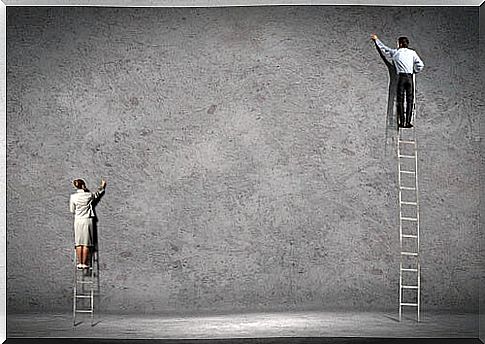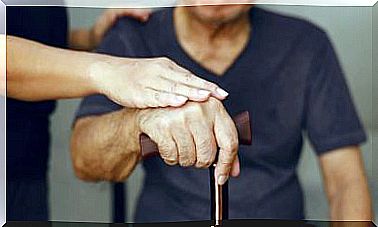Leadership And Female Discrimination

Many people think that gender inequality is a thing of the past, but this statement is far from the truth. We can still observe a culture and a society that favors men over women. Despite the advances made by the feminist movement, machismo continues to be defended and manifested in many contexts. In this article we are going to talk specifically about leadership and female discrimination around it.
One of the most notable evidences of the existence of a machismo rooted in the culture is the lack of presence of women in leadership positions. Leadership has traditionally been treated as a male affair. Although we are increasingly used to seeing women in positions of responsibility, the proportion of female leaders remains very low. In fact, if we talk about managerial positions in large companies in Spain, the percentage of women does not even reach 0.5%.
Differences between men and women in leadership
In recent decades, many studies have been carried out to try to find the relationship between leadership and female discrimination. One of the first hypotheses that have been explored is whether there are differences between men and women in leadership and whether these were the cause of the low presence of women in positions of responsibility and power.

Eagly and Johnson conducted a 1990 meta-analysis of 162 leadership studies. In this research, they analyzed separately the different behaviors of men and women when they were in a position of power. The results showed that there were gender differences in the behavior of the leaders.
Men tend to be more authoritarian, aggressive, and highly task-oriented. However, women lead with a more democratic, participatory and relationship-oriented style. Both styles are closely associated with gender stereotypes in today’s culture.
However, after analyzing the existing differences, the first evidence appears in favor of a relationship between leadership and female discrimination. Leadership studies show us that democratic, participatory, and relationship-oriented leaders are much more effective than those who are not. So, how is it possible that women, presenting that “good leader” pattern, do not have a large percentage of positions of responsibility?
Effects arising from female leadership and discrimination
Next, we are going to talk about two effects that arise because of machismo and make it difficult for women to access leadership positions. It is important to understand that although there is no explicit gender inequality, the implicit machismo in our culture and education has an equally detrimental effect on the female collective.
The effect of the glass ceiling
The term glass ceiling refers to the existence of an invisible barrier that prevents women from accessing managerial or leadership positions. The existence and influence of gender stereotypes are the main explanation and justification for this glass ceiling.
Let’s not forget that the figure of the leader is not about something individual, since without followers there is no leadership. Due to the prejudices generated towards women, we find that the followers reject their legitimacy as a leader. In addition, there is a strong tendency to associate positions of responsibility with the male gender. The author Schein coined the term think manager-think male to refer to this phenomenon.
On the other hand, an effect associated with the glass ceiling is the cement ceiling. This last term refers to those situations in which it is the woman herself who limits herself to reach a position of responsibility. This also occurs because of the implicit machismo in gender stereotypes, generating in women an anxiety to get out of what society expects of them.

The crystal cliff effect
We have already mentioned that there are many difficulties for women’s access to positions of responsibility, showing a clear relationship between leadership and female discrimination. But what happens when a woman takes on a leadership position? This is where the crystal cliff effect appears.
The crystal cliff refers to the fact that when women reach leadership positions, these tend to be more precarious and are associated with a greater probability of failure and criticism than those held by men. It seems that the think manager-think male ceases to have effect when the leadership position is associated with a crisis situation.
Thus, when you have to fill a position of responsibility with a high probability of failure, you usually look for a woman. In this way we turn to the think crisis-think female phenomenon . There is still research to be done to determine the causes of this effect, but the main hypotheses are those that speak about the better management of women in crisis situations or even hypotheses in favor of a male manipulation to increase the failure of women in leadership positions.
In conclusion, it is important to realize that gender inequality is still very present in our culture and society. The only way we have to combat it is by investigating and being critically attentive to all the social, cultural and educational aspects that foster a relationship between leadership and female discrimination.









